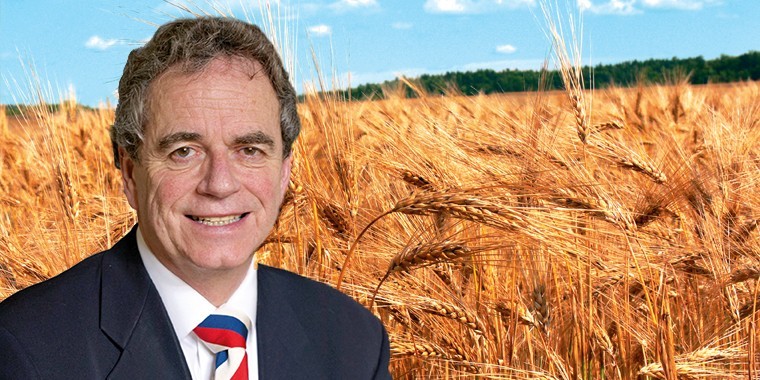Well, France like the UK and the United States, has voted for a significant change. It will either have a new independent centrist or far right nationalist as president.
It is looking less likely that Marine Le Pen will win. That is good news for the euro as she intended to ditch that for the Franc. This would cause the euro to plunge with sterling being unable to resist gaining artificial strength on the other side of the see saw. The euro has already strengthened and sterling has weakened, which is good news for UK grain values.
The UK old crop market has already plateaued. The domestic wheat price is capped – albeit at still a high price – by cheaper French imports to the north. So the old crop market feels a bit heavy as consumers have good cover, and are rolling purchases from month to month. Europe will have lower stocks to carry into the new harvest but it’s optimistic and is already offering new crop barley for June and wheat for July shipment.
Regarding new crop, anything could still happen: if the UK only had the same size wheat crop as this year (14.3 million tonnes) we would again only have half a million tonnes surplus – that is easy to dispose of.
Like this year we could wait and pick off the best export markets to fit the quality we have: we wouldn’t be rushing to sell in the first two months. But, drought notwithstanding, if we had the 16 million tonnes of harvest 2015, then we would have to compete with the other early cheap sellers and prices would fall.
Stepping back from the UK market, the world boasts record high wheat and maize stocks and expects two billion tonnes combined from the 2017 harvest. It is no wonder there are record short positions held by the international hedge funds in wheat and maize. While they have sometimes taken a bath being short in the last year, before that they made a lot of money believing the United States Department of Agriculture or International Grains Council crop forecasts, so they are backing the short horse again. With record soya bean crops predicted in South America, funds are also shorting soya as well.
With the likelihood of the Conservatives being returned to power on 8 June with an increased majority, sterling had started to strengthen in its own right, irrespective of the euro. Currency and in particular the sterling/euro and sterling/US dollar exchange rate will have a big effect upon the UK grain market.
A number of European Union countries have highly geared borrowing: between them there is reckoned to be one trillion euros of toxic loans. Taken from Fryer’s European Central Bank (ECB) report, this figure is the accumulation of non performing loans (NPL). Most vulnerable are Cyprus and Greece, followed by Slovenia, Portugal, Italy and Ireland. NPL ratio goes from 49% down to 15.8%: anything over 10% considered unsafe.
When EU countries default on national debt, the ECB – and eventually the other member states – have to step in and make good. This looks like another hot summer of unrest and discontent, which can only put more pressure on the euro. Could this mean that the sterling/euro exchange reverts to its pre Brexit level of only 77p? Well it could and if there was no other consideration it would knock £10/£15 off grain values.
And we have the weather to take into account. It’s been quite good really throughout the southern and northern hemisphere. But in England and parts of Spain and France we are behind the 2016 average rainfall from the middle of March to date: of course, that may have changed by the time you read this.
So if I were to create a virtual reality grain trading game – like Monopoly – you really would now have on the table all the ingredients to either make or lose a fortune. On the bullish side, you have the lowest US wheat planting acreage for 100 years. But that is nothing when you think of a possible nuclear war with North Korea, a Middle East conflict cutting off oil supplies or a possible drought in Europe spreading to Russia and the Black Sea countries. Then of course if any of those events actually happened you can only guess the panic that would be caused by the hedge funds rushing to buy back their massive short positions.
On the bearish side, at the end of June 2017 we have the largest ever world stocks of wheat and maize – fact. Despite some lower plantings all the main producing countries are predicting big cereals crops. Australia has recently put away record wheat and barley crops which it is busy making available to Pacific countries to bridge the gap until they harvest again.
The South America soya bean harvest grinds on with higher yield offsetting earlier flood losses. Le Pen or not, the euro may come under pressure because of weak member states defaulting on debt. With our own election increasing sterling value, the UK could lose much of its Brexit windfall.
Old crop is a law of diminishing returns as we get closer to harvest so take advantage of the still high prices for cereals.
As for new crop – nearly everyone has made some good forward sales already so I would leave it alone until it rains or until one of the above bullish, left field events happen. It’s a good job we are only playing with Monopoly money! (I don’t think).




